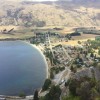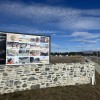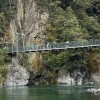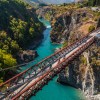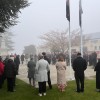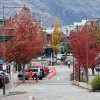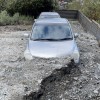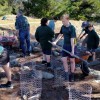
Tramper's death prompts warning over risks of hiking alone
Trampers are being urged to consider travelling in small groups in challenging alpine terrain in the wake of a solo tramper's death.
British tramper Stephanie Simpson, 32, died near the Brewster Track in the Mount Aspiring National Park in 2020.
She left for Brewster Hut from Fantail Falls car park on 8 February, an advanced tramping track. Data recovered from her Garmin watch showed she took a break after reaching Brewster Hut, before leaving the track and moving towards Brewster Glacier.
She turned around and returned a different way, initially towards the hut, but then descended into a steep valley.
A day later, a pair of trampers she met on the trail contacted the police after noticing her parked car, and her employer also contacted the police on 10 February after she didn't show up at work.
A search and rescue operation was launched on 11 February, and her pack was found three days later. Her body was located 800 metres downstream of Pyke Creek, with her boots on the river's edge.
Her death was the focus of a coronial investigation. Coroner Alexander Ho found Simpson likely tripped or fell as she approached the creek and drowned, but it was unclear why she descended into the valley.
The New Zealand Mountain Safety Council (MSC) - which provided a report to the investigation - noted she may have faced navigational errors, environment challenges or a potential fall during the day.
The coroner endorsed the council's safety recommendations of choosing the right trip for your experience level, packing the right gear and sharing your plans with others.
"MSC highlights the risks of tramping solo and how it can impact the ability to call for help, self-evacuation, self-monitoring and decision making," the council said.
"A further recommendation was made for those heading into terrain such as that around Brewster Hut and Mount Armstrong to travel in small groups instead of solo."
The MSC's recommendations for all hikers and trampers heading into the backcountry were:
- Choose the right trip for you. Make sure your experience level and skills match your objective and that you are well prepared for your trip.
- Understand the weather and be prepared to change your plans if the conditions turn. That includes weighing up the risks if the new plan involves going off track.
- Pack warm clothes, extra food and a backup means of navigation including ones that don't rely on batteries or electronic signal.
- Carry emergency equipment such as a first aid kit that includes a survival blanket and an emergency shelter, especially when heading above the bush line.
- Share your plans and leave a detailed itinerary with a trusted contact. Leaving clear intentions in hut books can help to narrow down the search parameters.
- Take ways to get help. All trampers should carry a distress beacon (either satellite messenger or personal locator beacon) particularly when intending to travel in remote areas with no cell coverage.
- Take care of yourself and each other. Focus must be maintained throughout your trip, particularly when off-track. Pacing, route-finding and other techniques may have to adjust to being physically and mentally tired. Paying attention to where you have come from can greatly assist if needing to backtrack.
















